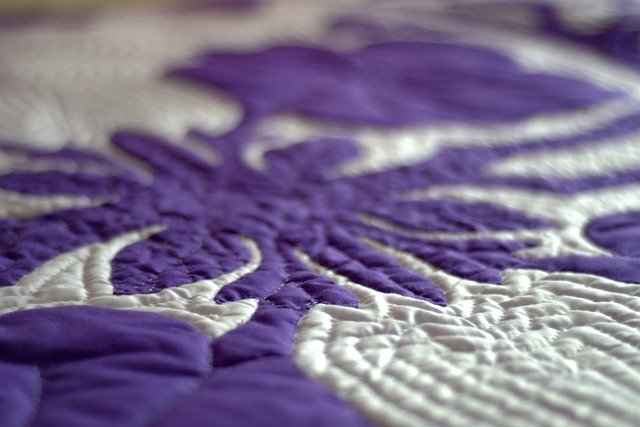Botanical Embroidery: Stitching Nature into Home Decor
Imagine stepping into a living room where delicate wildflowers seem to bloom from throw pillows, and intricate leaves dance across curtains. This isn't a magical garden, but the enchanting world of botanical embroidery in home decor. As the lines between nature and interior design continue to blur, this artisanal craft is experiencing a renaissance, bringing the outdoors in with every carefully placed stitch.

The Victorian era saw a surge in botanical embroidery’s popularity, coinciding with a growing interest in botany and natural sciences. Ladies of leisure would spend hours recreating the flora they observed in their gardens or during nature walks, resulting in stunning pieces that served both as decoration and as a record of local plant life.
Contemporary Revival and Techniques
Today’s botanical embroidery renaissance marries traditional techniques with modern aesthetics. Artists and hobbyists alike are exploring innovative ways to capture nature’s beauty in thread. One popular technique is thread painting, where stitches are layered to create depth and texture, mimicking the subtle gradients of petals or the veining of leaves.
Another trending approach is the use of mixed media, combining embroidery with watercolor painting or pressed flowers for a multi-dimensional effect. This fusion of techniques allows for a more naturalistic representation of botanical subjects, blurring the lines between textile art and botanical illustration.
Integrating Botanical Embroidery into Home Decor
The versatility of botanical embroidery makes it an ideal element for various home decor applications. From statement wall art to subtle accents on linens, this craft can adapt to any interior style.
For a bold impact, consider an oversized embroidered botanical piece as a focal point in a room. These large-scale works often feature a single, dramatic bloom or a lush garden scene, serving as an alternative to traditional painted artwork.
In more subtle applications, botanical embroidery can be found on cushion covers, table runners, and even lampshades. These smaller touches add layers of texture and interest to a space without overwhelming the overall design scheme.
DIY Potential and Customization
One of the most appealing aspects of botanical embroidery in home decor is its DIY potential. With basic supplies and some patience, homeowners can create personalized pieces that reflect their individual style and connection to nature.
Embroidery kits tailored for beginners have surged in popularity, often featuring pre-printed designs on fabric along with necessary threads and needles. These kits make it easy for novices to try their hand at creating beautiful botanical pieces for their homes.
For those looking to take their skills further, online tutorials and workshops offer guidance on advanced techniques like stumpwork—a method of creating three-dimensional embroidered elements that can make flowers and leaves appear to lift off the fabric.
Sustainability and Slow Design Movement
The resurgence of botanical embroidery aligns perfectly with the growing interest in sustainable and slow design. As an antidote to fast fashion and disposable decor, embroidered pieces are often viewed as heirlooms-in-making, meant to be cherished and passed down through generations.
This craft encourages a slower, more mindful approach to home decoration. The time and skill invested in each piece foster a deeper appreciation for handmade items and can lead to a more curated, meaningful home environment.
Color Trends and Palette Inspirations
While traditional botanical embroidery often aimed for realistic color representations, contemporary artists are experimenting with bold and unexpected color palettes. Monochromatic designs using varying shades of a single color create a modern, graphic look, while neon threads against neutral backgrounds offer a playful twist on classic motifs.
Some embroiderers draw inspiration from color trends in interior design, incorporating fashionable hues like sage green, terracotta, or dusty blue into their botanical creations. This approach allows embroidered pieces to seamlessly integrate with current decor styles while maintaining their timeless appeal.
The Future of Botanical Embroidery in Interiors
As the home decor landscape continues to evolve, botanical embroidery is poised to grow in both popularity and innovation. We can expect to see this craft expand beyond traditional applications, perhaps adorning unexpected surfaces like headboards or cabinet panels.
Technological advancements may also play a role in the future of botanical embroidery. Digital embroidery machines are becoming more accessible, allowing for intricate designs to be replicated with precision. This technology opens up possibilities for custom, large-scale productions that could bring botanical embroidery into commercial spaces and hospitality design.
In conclusion, botanical embroidery offers a unique way to bring the beauty of nature into our homes. Its blend of artistry, craft, and connection to the natural world resonates with contemporary desires for authenticity and personalization in interior design. As we continue to seek ways to make our living spaces more vibrant and meaningful, this age-old craft proves that sometimes, the most innovative design solutions are rooted in tradition.





